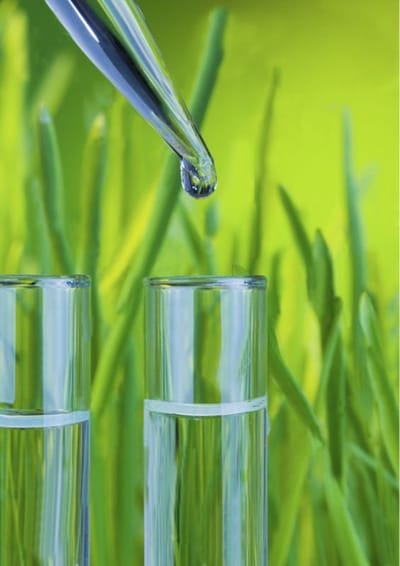THE ORIGINS
FROM ALKEMY TO AROMATHERAPY
In the history of medicine and at least until the sixteen century, the history of aromatherapy is largely blended with phytotherapy.
If we find the traces of distillation extractions methods, in China and India, ( ayus-veda) back severals millennials , it is in Egypt that their use has first been proven.In ancient Greece, the writing of Dioscorides refers to the use of aromatic extracts. The Romans also used them in the form of oily ointments.
The Persian alchemist Jabir Ibn Hayman ( GEBER) was credited with inventing the alambic and allowing the production of the first distillation quintessence in the 8th century A.D. Extraction processes subsequently improved with pharmacopoeias using them toward the sixteen century. it was only in the 19th century that the active principles of odoriferous molecules began to be isolated and classified, allowing their specific use.
THE FRENCH SCHOOL
In 1910, the chemist René-Maurice Gattefossé ( 1881-1950) who researched perfumery, burned his hands during a laboratory explosion . Very badly burned, and treated according to the means of contemporary medicine, he was rapidly affected with gas gangrene. As a last resort, removing his bandage, he applied lavender oil to his infected wounds. The results were astonishing and confirmed his intuition: the essence of lavender possessed real antiseptic and cicatrizing properties. From then on ,he devoted most of his research to the properties of essential oils. In the 1960's Dr. Valnet ( 1920-1995) resumed the work of Gattefossé and published
in 1964 the reference book " Aromatherapy: treatment of diseases by plant essences".
Subsequently, Pierre Franchomme, with the notion of scientific chemotype, helped to improve the identification of active ingredients in the extracts used. They are both considered the fathers of the modern scientific aromatherapy.
At the end of the 20th century, as with all pharmacognosy, scientific aromatherapy benefited from the advances in analytical methods, in particular chromatography . The precise distinction of aromatic compounds allowed medicine to better understand their mechanism of action, and to refine their prescription.
In the history of medicine and at least until the sixteen century, the history of aromatherapy is largely blended with phytotherapy.
If we find the traces of distillation extractions methods, in China and India, ( ayus-veda) back severals millennials , it is in Egypt that their use has first been proven.In ancient Greece, the writing of Dioscorides refers to the use of aromatic extracts. The Romans also used them in the form of oily ointments.
The Persian alchemist Jabir Ibn Hayman ( GEBER) was credited with inventing the alambic and allowing the production of the first distillation quintessence in the 8th century A.D. Extraction processes subsequently improved with pharmacopoeias using them toward the sixteen century. it was only in the 19th century that the active principles of odoriferous molecules began to be isolated and classified, allowing their specific use.
THE FRENCH SCHOOL
In 1910, the chemist René-Maurice Gattefossé ( 1881-1950) who researched perfumery, burned his hands during a laboratory explosion . Very badly burned, and treated according to the means of contemporary medicine, he was rapidly affected with gas gangrene. As a last resort, removing his bandage, he applied lavender oil to his infected wounds. The results were astonishing and confirmed his intuition: the essence of lavender possessed real antiseptic and cicatrizing properties. From then on ,he devoted most of his research to the properties of essential oils. In the 1960's Dr. Valnet ( 1920-1995) resumed the work of Gattefossé and published
in 1964 the reference book " Aromatherapy: treatment of diseases by plant essences".
Subsequently, Pierre Franchomme, with the notion of scientific chemotype, helped to improve the identification of active ingredients in the extracts used. They are both considered the fathers of the modern scientific aromatherapy.
At the end of the 20th century, as with all pharmacognosy, scientific aromatherapy benefited from the advances in analytical methods, in particular chromatography . The precise distinction of aromatic compounds allowed medicine to better understand their mechanism of action, and to refine their prescription.
